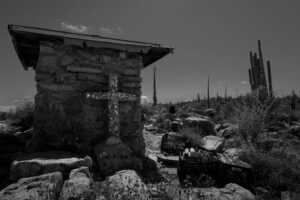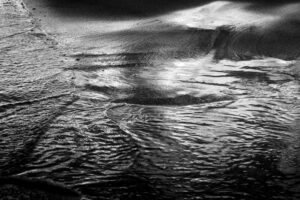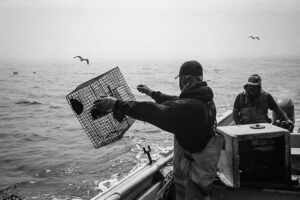How to make Wedding Photography Green
It seems I got some Photographer’s knickers in a bunch with a post about how we as [intlink id=”green-wedding-photography” type=”post”]wedding photographers and the photography industry in general fail in the realm of environmental responsibility[/intlink], and how their are a few Photographers that take advantage of the word “Green” in their marketing.
Most of the upset e-mails and comments I got were from photographers that do quite a bit in their lives and business to reduce their carbon footprints. But there were two points that were obviously lost on them:
- My problem isn’t with those “trying their best”, it’s those that are making claims that they are Green Photographers without anything to back it up. So if you aren’t making those claims, I really don’t understand the animosity.
- It takes far more energy to bring the “oh so drool worthy” cameras and lenses to our doors, and to power our computers, which we spend the vast majority of our time when we aren’t shooting, than most people even consider.
Solution = Education and Standards
There were a few photographers that brought up a really good point; There is no accountability or standards posed for such claims in the photographic world. Truth be told, there are not many standards out there in the way of promoting your business as “Green.” The only certification program I know of myself is through LEED (Leadership in Energy and Environmental Design). I know of LEED from my previous career in Architecture.
With a LEED Certified Architect, each client obtains a great deal of education about the importance of the standards and why to utilize certain products over others.
With a certification system for Photographers, we can be assured that Green Photographers meet certain standards themselves and are providing their clients with accurate information, as well as protecting customers.
LEED ranks each building into Silver, Gold and Platinum based on how well they meet certain criteria. So, in the spirit of LEED standards for Green buildings, I propose the following Standards for “Green Photographers.” I would recommend that the PPA (Professional Photographers Association) be the organization to champion this program, as their reach goes out to Photographers of every type, worldwide.
Silver:
- Maintains a home or office that consumes less than 6,600 kW/hrs per year. (This is approximately 25% less than the average household).
- You may use Carbon Offsets to offset up to 15% of the above figure.
- Products offered must be packaged in recycled and recyclable packaging and purchased from U.S. made sources in bulk to reduce shipping.
- Offsets must be purchased for the delivery of products (prints, and albums) from out of area (over 100 miles).
- Purchasing Offsets for your yearly Carbon Footprint (includes car travel, air travel, etc).
- Monthly participation in community events that benefit the environment, (Beach clean-ups, recycling drives, etc.).
Gold:
- Everything from Silver, plus:
- Maintains a home or office that produces less than 4,500 kW/hrs per year. (This is approximately 50% less than the average household).
- You may use Carbon Offsets to offset up to 5% of the above figure.
- Purchase camera equipment and business equipment from Non-Corporate sources within 100 miles of a radius to you. This supports your local economy, and keeps people near you employed. (No mail order).
- Website and Print Fulfillment site run on a Green Hosting company (Solar panels used for electricity, rain-water used for server cooling).
- Track energy usage of your website visitors and purchase Offsets (based on average 150 watt computer * Hours of use on your site / 1000=kW/hr).
- Print orders and albums must be scheduled for monthly delivery to reduce shipping.
- Non-Leather Albums alternatives must be provided for your clients.
Platinum:
- Everything from Gold, plus:
- Place of business shall be either maintain a LEED Platinum, Gold or Silver certification, or meet the requirements for any of those levels.
- Maintains a home or office that produces less than 1,800 kW/hrs per year. (This is approximately 80% less than the average household).
- Offsetting will not be eligible as a substitution in this category. And any additional energy requirements must be provided by non-public energy (i.e. solar panels, personal wind turbines, etc).
- Purchases either only U.S. manufactured cameras, or second hand cameras bought locally.
- Supplies only non-leather albums content from companies utilizing recycled materials, and that source their materials from within a 100 mile radius of their location of manufacture.
*Just a note: There are obviously certain criteria in the Platinum category that will currently be unachievable. This was done on purpose, so we can pressure manufactures to fill in the missing pieces.
And this is obviously skewed towards wedding photographers, some of these would obviously not apply to other photographers, and there would be additional requirements for them as well.
These are just preliminary ideas and thoughts. These of course should be reviewed and discussed with leading Environmentalists, Manufacturers, and Photographers to come to a conclusion on what standards should be adopted for each category. But, I do believe that these are great milestones for anyone in their own business whether or not you care about a certification, and just care about our One Sweet World.
If you have your own thoughts please include them below for others to read. If you are so inclined, I would appreciate if you would use the Share buttons below, pass this along to other photographers, and if you have connections with organizations like PPA, please let them know it’s time to make a difference in our industry.
I really make no claims to be a Green person (I have a tremendous knowledge of it due to my old Architectural life), but as I was researching these last couple articles I have seen for myself that I am a tremendous waster and through this I have made my own resolve to watch my own personal habits and may be incorporating some of these ideas into my own practice. (Don’t worry, I won’t call myself a Green Photographer now). 🙂
As a final note, I’d like to thank Green LA Girl whose talk at WordCamp LA on Saturday, is where I received a few ideas that have been incorporated into the different certification levels. Thanks for all the great info Siel.









Leave a Reply